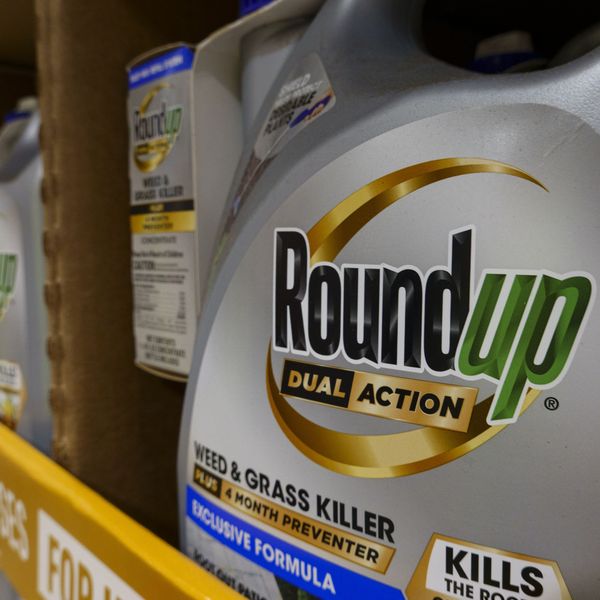NYPD Used Cell Phone Spying Tools Over 1,000 Times Since 2008: NYCLU
'If carrying a cell phone means being exposed to military grade surveillance equipment, then the privacy of nearly all New Yorkers is at risk.'
The New York Police Department (NYPD) has used the covert cell phone spying devices known as Stingrays more than 1,000 times since 2008, including for the investigation of low-level crimes and typically without a warrant, the New York Civil Liberties Union (NYCLU) revealed on Thursday.
"If carrying a cell phone means being exposed to military grade surveillance equipment, then the privacy of nearly all New Yorkers is at risk," said Donna Lieberman, NYCLU executive director. "Considering the NYPD's troubling history of surveilling innocent people, it must at the very least establish strict privacy policies and obtain warrants prior to using intrusive equipment like Stingrays that can track people's cell phones."
Thursday's revelations are the first time the extent of the police department's use of the devices has been made public. According to internal documents (pdf) obtained by the NYCLU through a Freedom of Information Act (FOIA) request, the NYPD deployed Stingrays as many as 200 times a year.
In addition, the department confirmed that it has no written policy for the devices, but that its practice is to obtain a pen register order--which requires a lower standard of probable cause to collect phone data than a warrant--prior to using them.
Stingrays operate by mimicking cell phone towers, tricking nearby cell phones into connecting with them, which allows police to pinpoint users' locations, collect phone numbers that a user has been calling or text messaging, and even intercept the contents of their communications. Civil rights groups have criticized the controversial technology for what they say are invasive and unconstitutional methods.
The devices were most often used in the investigation of serious offenses, such as homicide, rape, and other violent crimes, but also for crimes like identity theft and money laundering. Other instances were even more dubious.
The New York Times reports:
In one 2015 case, the Bronx Homicide Squad appeared to use the device to track down a witness, rather than a suspect. And in a 2011 assault case, it appears that detectives used the device to track a phone, only to realize they were tracking the wrong number.
Usually, the use of the cell-site simulator ended with an arrest or a missing person being discovered. But in slightly less than a quarter of cases in early 2015, the phone could not be located.
Police departments throughout the country have historically kept their use of Stingrays under wraps, at times even refusing to admit if they had any in their possession. The Department of Justice (DOJ) in September revised its rules on the use of the devices, implementing new standards that require law enforcement agencies to obtain warrants before using them.
But, as the NYCLU discovered, those rules do not seem to have been adopted by the NYPD.
"New Yorkers have very real concerns about the NYPD's adoption of intrusive surveillance technology," said NYCLU senior staff attorney Mariko Hirose, who filed the FOIA. "The NYPD should at minimum obtain warrants before using Stingrays to protect the privacy of innocent people."
An Urgent Message From Our Co-Founder
Dear Common Dreams reader, The U.S. is on a fast track to authoritarianism like nothing I've ever seen. Meanwhile, corporate news outlets are utterly capitulating to Trump, twisting their coverage to avoid drawing his ire while lining up to stuff cash in his pockets. That's why I believe that Common Dreams is doing the best and most consequential reporting that we've ever done. Our small but mighty team is a progressive reporting powerhouse, covering the news every day that the corporate media never will. Our mission has always been simple: To inform. To inspire. And to ignite change for the common good. Now here's the key piece that I want all our readers to understand: None of this would be possible without your financial support. That's not just some fundraising cliche. It's the absolute and literal truth. We don't accept corporate advertising and never will. We don't have a paywall because we don't think people should be blocked from critical news based on their ability to pay. Everything we do is funded by the donations of readers like you. Will you donate now to help power the nonprofit, independent reporting of Common Dreams? Thank you for being a vital member of our community. Together, we can keep independent journalism alive when it’s needed most. - Craig Brown, Co-founder |
The New York Police Department (NYPD) has used the covert cell phone spying devices known as Stingrays more than 1,000 times since 2008, including for the investigation of low-level crimes and typically without a warrant, the New York Civil Liberties Union (NYCLU) revealed on Thursday.
"If carrying a cell phone means being exposed to military grade surveillance equipment, then the privacy of nearly all New Yorkers is at risk," said Donna Lieberman, NYCLU executive director. "Considering the NYPD's troubling history of surveilling innocent people, it must at the very least establish strict privacy policies and obtain warrants prior to using intrusive equipment like Stingrays that can track people's cell phones."
Thursday's revelations are the first time the extent of the police department's use of the devices has been made public. According to internal documents (pdf) obtained by the NYCLU through a Freedom of Information Act (FOIA) request, the NYPD deployed Stingrays as many as 200 times a year.
In addition, the department confirmed that it has no written policy for the devices, but that its practice is to obtain a pen register order--which requires a lower standard of probable cause to collect phone data than a warrant--prior to using them.
Stingrays operate by mimicking cell phone towers, tricking nearby cell phones into connecting with them, which allows police to pinpoint users' locations, collect phone numbers that a user has been calling or text messaging, and even intercept the contents of their communications. Civil rights groups have criticized the controversial technology for what they say are invasive and unconstitutional methods.
The devices were most often used in the investigation of serious offenses, such as homicide, rape, and other violent crimes, but also for crimes like identity theft and money laundering. Other instances were even more dubious.
The New York Times reports:
In one 2015 case, the Bronx Homicide Squad appeared to use the device to track down a witness, rather than a suspect. And in a 2011 assault case, it appears that detectives used the device to track a phone, only to realize they were tracking the wrong number.
Usually, the use of the cell-site simulator ended with an arrest or a missing person being discovered. But in slightly less than a quarter of cases in early 2015, the phone could not be located.
Police departments throughout the country have historically kept their use of Stingrays under wraps, at times even refusing to admit if they had any in their possession. The Department of Justice (DOJ) in September revised its rules on the use of the devices, implementing new standards that require law enforcement agencies to obtain warrants before using them.
But, as the NYCLU discovered, those rules do not seem to have been adopted by the NYPD.
"New Yorkers have very real concerns about the NYPD's adoption of intrusive surveillance technology," said NYCLU senior staff attorney Mariko Hirose, who filed the FOIA. "The NYPD should at minimum obtain warrants before using Stingrays to protect the privacy of innocent people."
The New York Police Department (NYPD) has used the covert cell phone spying devices known as Stingrays more than 1,000 times since 2008, including for the investigation of low-level crimes and typically without a warrant, the New York Civil Liberties Union (NYCLU) revealed on Thursday.
"If carrying a cell phone means being exposed to military grade surveillance equipment, then the privacy of nearly all New Yorkers is at risk," said Donna Lieberman, NYCLU executive director. "Considering the NYPD's troubling history of surveilling innocent people, it must at the very least establish strict privacy policies and obtain warrants prior to using intrusive equipment like Stingrays that can track people's cell phones."
Thursday's revelations are the first time the extent of the police department's use of the devices has been made public. According to internal documents (pdf) obtained by the NYCLU through a Freedom of Information Act (FOIA) request, the NYPD deployed Stingrays as many as 200 times a year.
In addition, the department confirmed that it has no written policy for the devices, but that its practice is to obtain a pen register order--which requires a lower standard of probable cause to collect phone data than a warrant--prior to using them.
Stingrays operate by mimicking cell phone towers, tricking nearby cell phones into connecting with them, which allows police to pinpoint users' locations, collect phone numbers that a user has been calling or text messaging, and even intercept the contents of their communications. Civil rights groups have criticized the controversial technology for what they say are invasive and unconstitutional methods.
The devices were most often used in the investigation of serious offenses, such as homicide, rape, and other violent crimes, but also for crimes like identity theft and money laundering. Other instances were even more dubious.
The New York Times reports:
In one 2015 case, the Bronx Homicide Squad appeared to use the device to track down a witness, rather than a suspect. And in a 2011 assault case, it appears that detectives used the device to track a phone, only to realize they were tracking the wrong number.
Usually, the use of the cell-site simulator ended with an arrest or a missing person being discovered. But in slightly less than a quarter of cases in early 2015, the phone could not be located.
Police departments throughout the country have historically kept their use of Stingrays under wraps, at times even refusing to admit if they had any in their possession. The Department of Justice (DOJ) in September revised its rules on the use of the devices, implementing new standards that require law enforcement agencies to obtain warrants before using them.
But, as the NYCLU discovered, those rules do not seem to have been adopted by the NYPD.
"New Yorkers have very real concerns about the NYPD's adoption of intrusive surveillance technology," said NYCLU senior staff attorney Mariko Hirose, who filed the FOIA. "The NYPD should at minimum obtain warrants before using Stingrays to protect the privacy of innocent people."

